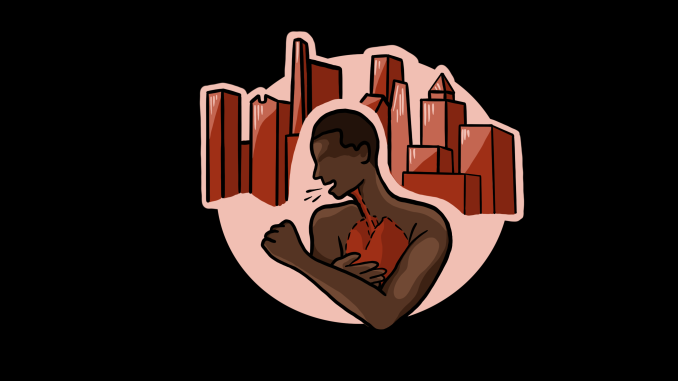
I leaned on the wall as I walked through my hallway. I tried to gain control of my breathing with every step; as my wheezes worsened, every exhale sounded like a whistle.
I entered my mom’s room and called out to her. It took a few attempts until she woke up.
“Yes, Chris,” she said with her eyes still closed.
A wheeze followed my plea, “I need the machine.”
That was the quickest way I could say, “I can’t breathe and need the nebulizer,” a machine that turned the liquid albuterol sulfate medication for my asthma into an aerosol I could inhale.
The nebulizer sent the medicine directly to my lungs, clearing mucus that prevented oxygen from entering and leaving while treating inflammation. My mom perfected the routine because of my consistent early morning visits.
My asthma made growing up in Philadelphia a struggle. In minutes, it could turn a great day into a nightmare because I couldn’t breathe. I missed sports games and classes, and my family frequently needed to pick me up from school early because the nurse didn’t have a nebulizer.
Every asthma attack meant the same treatment cycle would be repeated again: filling the mask with albuterol, putting it on and pressing the button. It only took a minute, but doing it eight times per week was a draining commitment. Every time I grabbed that mask, I imagined my life without asthma.
I was able to experience that dream in 2017 when I moved to Raleigh, North Carolina. My family left Philadelphia due to the city’s violence, and I was surprised by my body’s positive reaction.
During the four years I spent in Raleigh, I never suffered a serious asthma attack. I didn’t need to bring my inhaler to school, and I almost forgot about the nebulizer.
It was liberating to play a full game of football without having an attack. Living without asthma treatment was a new normal, but it didn’t last.
Two years ago, I returned to Philadelphia to attend Temple University and fulfill my dream of studying journalism. I was alarmed at how quickly my symptoms returned.
I began to wheeze, experience chest pain and grow tired just from walking up the steps. Finally, during the holiday season last year, my symptoms exceeded the whistling sound and chest pain I was experiencing: I could barely breathe.
For the first time in five years, I needed the nebulizer. As I watched the aerosol float by my eyes, I wondered if my flare-up was caused by my return to Philadelphia.
I began researching the city’s climate and discovered high pollution heavily influenced my condition. Philadelphia’s air quality is affected by ground-level ozone, a gas pollutant created by vehicle emissions, refineries and power plants, and is known to cause asthma attacks, according to IQAir, an air quality information platform.
In Philadelphia, more than 900,000 residents are more likely to be sensitive to ozone and can experience severe coughing and irritation in the lungs and throat. They can also experience chest pains due to the polluted air, all symptoms I encountered upon my return.
The air quality’s impact on my breathing inspires me to advocate for justice for Philadelphians who share my experience. The City of Philadelphia must make policy changes to protect air quality to decrease carbon emissions and the chances of respiratory illness in residents.
Currently, more than half of citywide carbon emissions are from buildings’ energy use, according to Philadelphia’s Office of Sustainability. Stepping up the city’s commitment to being carbon-neutral would contribute to cleaner air by replacing harmful carbon emissions with renewable energy.
Philadelphia has a goal to achieve carbon neutrality by 2050, but some cities, like Ithaca, New York, plan to decarbonize all buildings and reach carbon neutrality by 2030, according to the City of Ithaca.
Ithaca already required all new buildings to meet net-zero carbon emissions by 2026 and now plans to implement 100 percent renewable electricity by 2025. Philadelphia’s current plans are to reduce greenhouse gas emissions by 50 percent by 2030 and implement 100 percent renewable electricity by 2030.
Philadelphia’s air quality puts residents’ health at risk. If the city follows Ithaca’s Green New Deal, the city can decrease harmful ozone and improve Philadelphians’ quality of life up to 20 years ahead of their planned target. People should never have to lean on the wall to stay upright because they’re struggling to breathe.


Be the first to comment